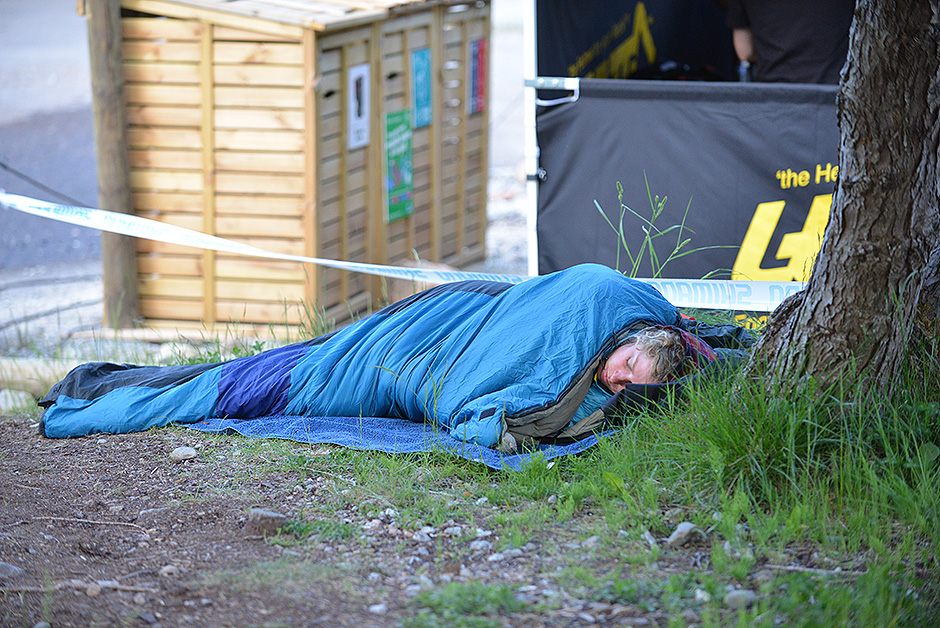Ever since Gee Atherton got his tackle out for Cosmo, the secret’s been out for downhill… The gym is a necessary evil of the sport.
The crux of the matter may only be a three minute sprint (which Rob Warner reckoned he could do hungover) but pretty much every muscle group is used on the bike, from sprinting legs, a solid core and, most obviously, in pumped forearms.
We used to sneer at those riders who spent more time lifting dumbells than pints but there’s no denying that putting the sweaty hours in leads to less fatigue on a run and makes it far easier to throw the bike around through the burl.
Workouts have to be managed though, there’s no point trotting down to the gym, smashing out 10 bench presses, flexing in the mirror and calling it a day.
Just as important as the workout is the recovery. After all we’ve just said, it may seem a bit hypocritical to also advocate doing not very much but if you don’t give your body time to repair damaged muscles you’ll only find yourself getting weaker and weaker.
Here are five steps to improve your post-ride recovery period:
Increase your protein intake

Protein is the building block for muscles and the more you take in, the more you’re faster you’re going to recover.
The body craves quality nutrients immediately after exercise because it is in an energy deficit, which means it will start to break down its own tissue for energy to rebalance the score.
That’s bad news for your muscle mass, as well as resulting in a prolonged recovery time and potentially an increase in muscle soreness. All in all, not good news for ensuring your body gets the most out of a training session.
Meat is an obvious way to get protein into your body but a more effective (and less sweaty) way is to use a supplement.
Vitfit Sport has determined that 20g of protein per serving within 30 minutes of a training session is an ideal amount to consume, alongside other nutrients, to give your body the hit it needs.
Each serving of a Vifit Sport product, whether it’s a bar, shake or drink contains 20g of milk-based protein, as well as vitamin D, potassium and magnesium. The range include a whole host of flavours, all naturally sourced and with no artificial colourings or preservatives.
Warm up/ Cool down

Do you go to Morzine and hit up Champery as your first lap? Of course not. Most of us head over to Les Gets for some warm up laps on the red Flow trail under the gondola to ease into it.
Training should be no different with a proper warm up and cool down period. After a workout, especially a high-intensity one, your muscles are in a catabolic state (where they start to break down for energy) but are also flooded with all the waste products of your effort, including lactic acid and carbon dioxide.
In order to help move these waste products along, you need to stimulate blood flow and to do this, a gentle spin usually does the trick.
Massage

A deep tissue massage will encourage blood to flow to the muscles and boost recovery. Hey, if it’s good enough for the pros…
Stretch

Carrying out a stretching regime will help to maintain your hard-earned flexibility, helping to improve muscle performance on your next ride. At the same time, it’s vital to be able to return to your optimal riding position without discomfort, so don’t make the mistake of waiting until you’re suffering with back-ache before starting to stretch.
Sleep

The truth is, nobody really knows why the body decides to sleep, all we know is that it’s important. But modern life (read, watching edits) can get in the way and disrupt our natural rhythms. As cyclists, those physical stresses are increased, so our sleep requirements go up, too. For more information on how important a good sleep pattern is to recovery, read this guide to the sleep cycle.
So, in short, if you want to make long-term gains on the bike, the recovery process is arguably as important – if not more so – than the ride itself. Or, to follow Vifit Sport’s ethos, “Ride, Recover, Repeat”.







